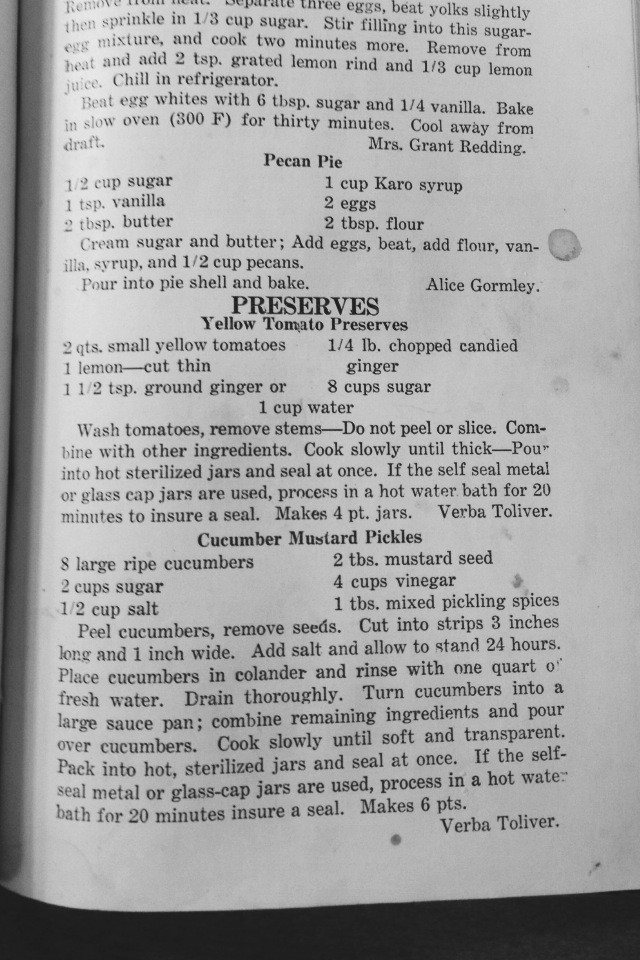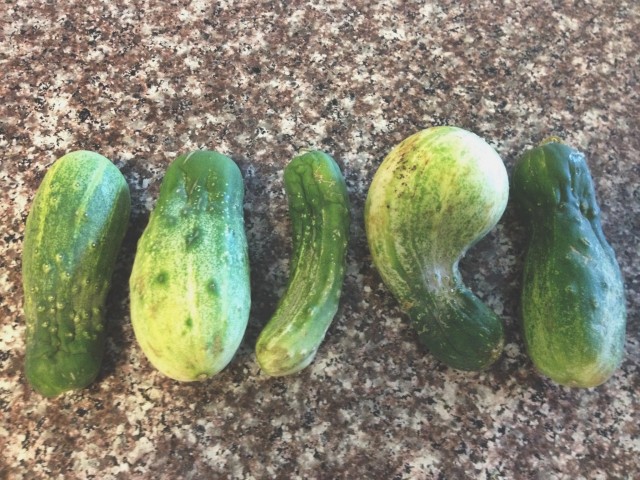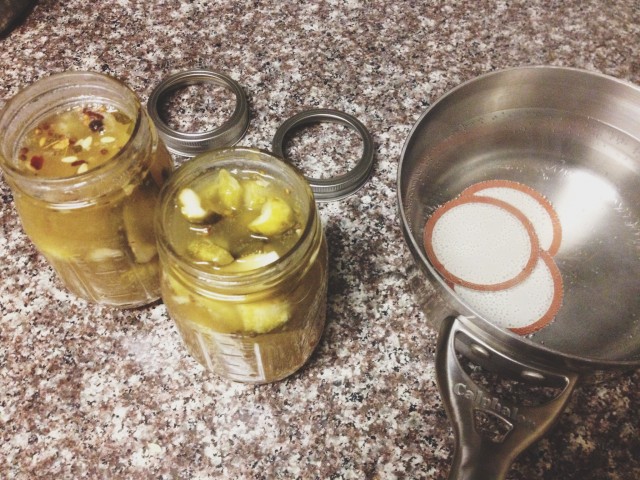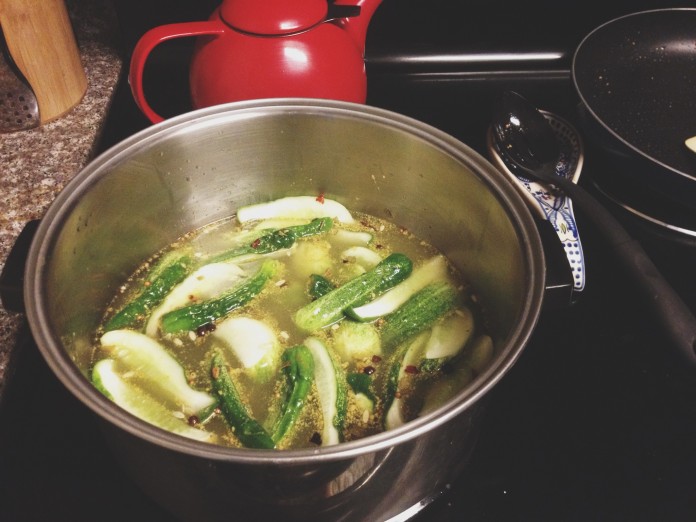When choosing a recipe for Cookbook Confessions, I have two qualifications. One, it must be strange. Certainly I cannot choose a title because it sounds appetizing. Two, it must require some experimenting—whether with substitutions or uncommon cooking techniques.
This week, the title sounds fairly enticing. But pickles mean canning.

Canning brings to mind a steam-filled kitchen, rows of mason jars and a floor covered in summer vegetables just waiting to be stored in the winter pantry. Childhood heroines like Laura Ingalls Wilder of “Little House on the Prairie” encouraged me to think of canning as the ultimate pioneer woman skill.

At 10 years old, I was convinced knowledge of canning absolutely defined true self-sufficiency. With my college days waning and real life looming, it’s time to prove myself an independent, successful adult.
The adventure began at the Waco Downtown Farmers Market. From one local vendor, I bought six adorable cucumbers. One cucumber went bad before I had the chance to can, which further impressed on me the nobleness of my task. Wasting food has always felt like a sin.
I originally intended to can them as whole pickles, but mason jars sizes were rather limiting. Unfortunately, this week’s checkout at H-E-B brought no weird stares or comments from the cashier. Apparently, buying a 16-pack of mason jars is a fairly normal encounter with a 22-year-old female. Thank you, Pinterest.
Once home, I readied the cucumbers by slicing them into half-inch wide pieces. These locally grown cucumbers weren’t exactly straight, so my pickle spears are rather lop-sided.

Then I left them to marinate in a half cup of salt—give or take, I don’t measure—for three hours. The recipe recommended 24 hours, but it’s the 21st century, and instant gratification is all the rage. Unfortunately, I would discover later that you can’t eat pickles immediately. This should have been obvious, since the whole point of canning is preservation.
Then I rinsed the salt off the cucumbers, added them to the saucepan and combined the rest of the ingredients. Again I did not measure, but this is mostly because the author, Mrs. Verba Toliver, neglected to specify the size of the cucumbers. Therefore I had no idea what the ratio of ingredients should be.
Though usually I will avoid Google when doing these cookbook experiments, Toliver’s description of canning stumped me. I had no idea how to do a hot water bath, especially after I realized none of my pots were deep enough to cover my mason jars.
A bit of quick research revealed an alternate process to the dangerous and messy water-bath canning. This method still requires boiling the lids in order to prepare the hot wax for sealing. It simply suggests the oven at 270 degrees—the equivalent to being submerged in boiling water
I made one can using the “enjoy now” option and the other in the “fresh preserve” option. This guaranteed me both a sample for the conclusion of this article as well a move to retain the primary system of pickling, like those of the old days when the can was not opened again for months.
A week later, I’m proud to say the pickles are delicious. Even my roommate admitted that though she doesn’t like sweet pickles, these has a wonderfully addicting tang of both sweet and sour.
If you enjoyed this week’s column, keep an eye out for future experiments. During last week’s trip to the Texas Collection, some of my favorite titles were eye-catchers like Jeff Davis Pie, Baby Porcupines, Stuffed Beef Heart, Mincemeat Pudding and My Mother’s Doughnuts. Don’t worry; no porcupines will be harmed in the making of this column.







